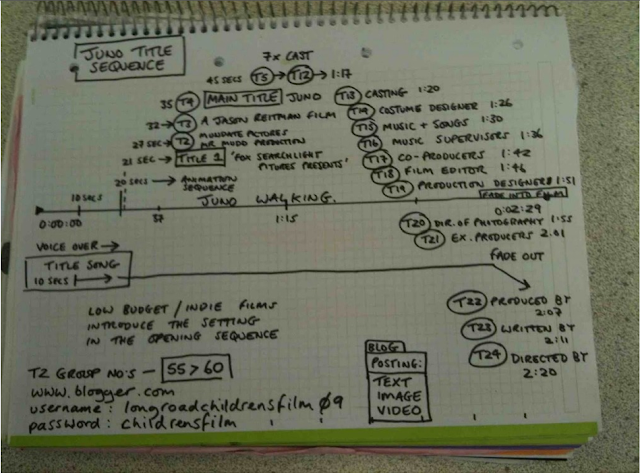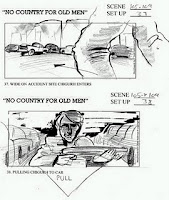You have already looked at opening sequences, so this should not be the same as the Influences post. Instead, prior to storyboarding and scripting your film, you should do a detailed study of an opening so that you fully appreciate shot lengths and the type and number of shots that should be included.
One exercise you can do is to identify a film that has a similar style to one that you wish to make (in terms of title sequence, or possible in terms of genre or style) and think about how many shots there are and the length of each.

The above example is an example of a detailed study of an opening sequence. There is a video line that gives a basic idea of the visuals 'Juno Walking' (with Animation Sequence) and with each of the different credits within the film. While the sound in this case is one set song, you should aim to have a little more variation in your soundtrack.
Identify the Different Shots & Credits
One exercise you can do is to identify a film that has a similar style to one that you wish to make (in terms of title sequence, or possible in terms of genre or style) and think about how many shots there are and the length of each.

The above example is an example of a detailed study of an opening sequence. There is a video line that gives a basic idea of the visuals 'Juno Walking' (with Animation Sequence) and with each of the different credits within the film. While the sound in this case is one set song, you should aim to have a little more variation in your soundtrack.
By modelling your storyboard on an opening sequence structure that exists will allow for a far greater attention to detail and move your project towards something that is industry standard as opposed to a student video project.
You can present this close analysis in different ways- either written and scanned as above or take a still image of every title from an opening sequence and present it visually in this way.
You can present this close analysis in different ways- either written and scanned as above or take a still image of every title from an opening sequence and present it visually in this way.






































